
Written by: Umbrella
On August 27, BTC ecological project BitLayer landed on Binance Alpha. This BTCFi star project, which was once highly anticipated, wrote a footnote to the entire track with a plunge.
According to CMC data, the opening price of BTR was 0.1511, and it plummeted to 0.077 in just a few hours, with a single-day decline of as much as 48.6%.As of August 28 today, the tokens have fallen 44.3% from their historical highs, with a turnover of US$60.3 million in 24 hours, and a trading volume to market value ratio of as high as 274%. This extreme speculative turnover rate exposes the embarrassing reality of the lack of long-term holders of the project.
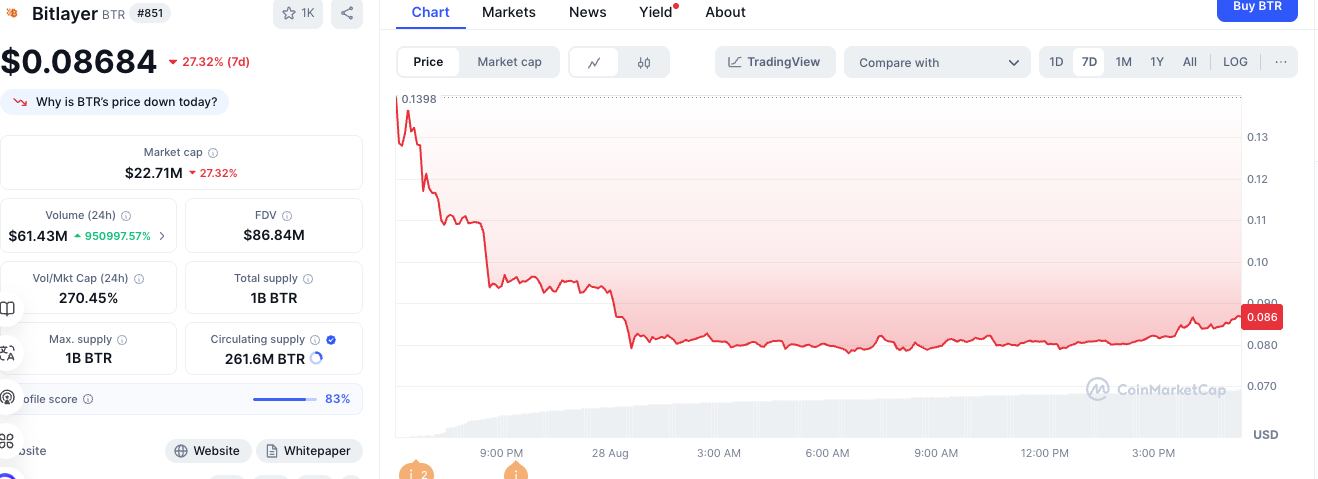
What is even more thoughtful is that although TVL on-chain still maintains a relatively high of US$429 million, the cliff-like decline in token prices clearly reflects the market’s doubts about the ability to capture BTCFi’s ecological value.
The opening plunge of BitLayer shows more than once the phenomenon of “the top of the currency is the peak”, and behind it is a microcosm of the entire BTCFi narrative moving from fanaticism to decline.
The collective sinking of mainstream projects
The BTC ecosystem has also produced many phenomenal popular projects, but it is hard to hide its essential flaws and narrative contradictions.
Merlin Chain: Only 50 million TVL left for 3.8 billion
As a former leading BTCFi project, Merlin Chain’s data changes are thrilling.
The project attracted as much as US$3.8 billion in BTC pledges within 50 days of its launch, with a peak TVL reaching US$530 million, and once became the number one star project with BTC Layer2 TVL and users.
However, the reality is extremely cruel: According to DeFillama data, Merlin Chain currently has only $50 million in TVL, a plunge of more than 90% from its peak.The price of its token Merl hovers around $0.115, although it rose 45.1% this year, it still fell 90% from its all-time high.What’s even more heartbreaking is that its 24-hour on-chain inflow is only $1,946.
From a well-deserved leading project on the track to everyone who is like a rat crossing the street, it only took Merlin Chain half a year. To this day, people still mention Merlin occasionally, but almost all of them are sarcasm and complaints about it.
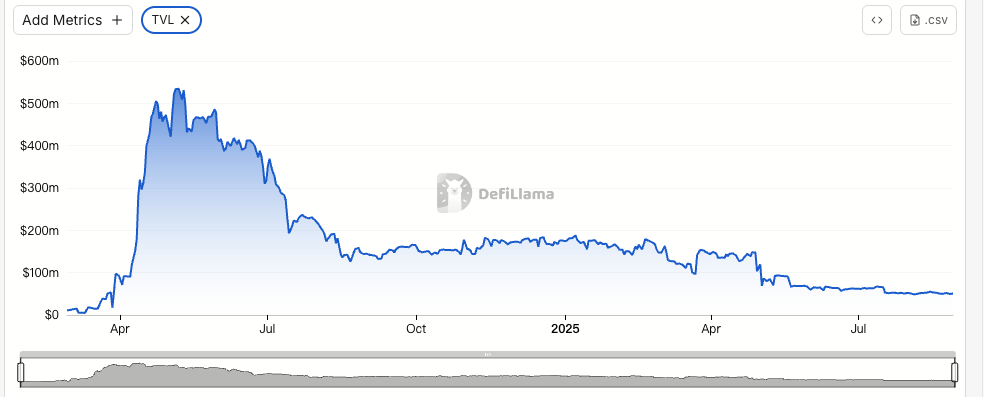
Inscriptions and BTC NFT: From Carnival to Self-Dream
The Ordinals inscriptions and BRC-20 tokens that once ignited the BTC ecosystem are no longer in glory.
Looking back on the winter when the inscriptions were once hot, every public chain was launching its own inscription products, causing the market to fall into a craze for the whole nation to make inscriptions. BTC, as the origin of all things in the crypto world, gave birth to popular projects such as Sats and Ordi.The slogan “Buy Ordi today and drive Audi tomorrow” seems to be still rewinding in my ears.
Nowadays, the phrase “Ordinals are dead” has changed from mocking to self-deprecating memes in the circle, and even the official account of the Inscription Project has begun to use this meme to make self-mockery.
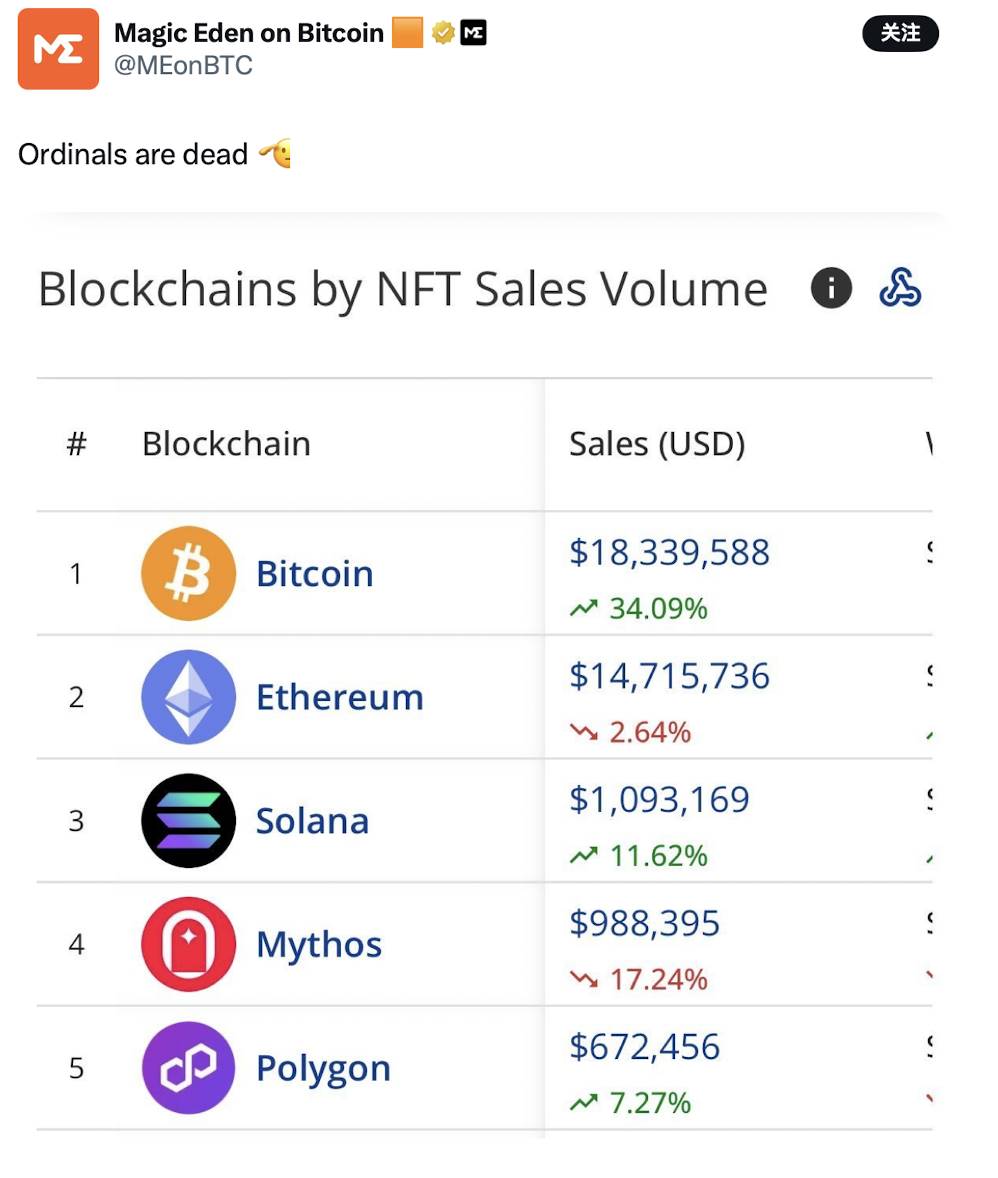
The 24-hour active users in the BTC NFT market have less than 2,000, accounting for 1.7% of the activity level of the entire chain, far lower than the ETH or Solana ecosystem.
The actual use of inscriptions and NFTs is still a controversial topic in the market today, but once active users have actually left one after another. The loss of user confidence also indicates that the status of this narrative in people’s hearts is gradually being forgotten with the fast pace of the crypto market.
In addition to Merlin Chain, BTC inscriptions and NFTs, other BTCFi projects have gradually exposed their own shortcomings or patterns.
Babylon’s current TVL hit a record high of US$6.3 billion, but the currency price has fallen 77% from its high point, revealing the shortcomings of its single pledge model lacking innovative applications; Core, also a popular project in the BTC ecosystem, currently has only US$386 million, down more than 70% from the beginning of the year.
The truth behind the data is even more serious: except for Babylon, the daily expenses of most BTCFi projects are even less than US$50,000, far lower than the income level of traditional DeFi projects that are often multi-million dollars. The unsustainability of this business model is being ruthlessly put on the market.
Narrative fatigue and inner contradictions
The fundamental dilemma of BTCFi stems from the technological limitations of BTC itself.
As “digital gold”, BTC does not have the programmability of smart contracts in design, which makes all BTCFi applications have to rely on compromise solutions such as sidechain, L2 or cross-chain bridge.
According to DeFillama data, in the current mainstream BTCFi projects, bridging assets account for 80%-100% of TVL: Merlin Chain’s bridging TVL accounts for as high as 80%, Core reaches 94%, and Bitlayer is close to 100% dependent on BTC cross-chain.
This extreme reliance on cross-chain infrastructure not only increases security risks, but also violates the core spirit of BTC’s decentralization and autonomy.
On social media, BTCFi discussions have shifted from early excitement exploration to the skeptical stage of “prove-your-worth”.More and more KOLs have also listed the BTC ecosystem as a doomed track.
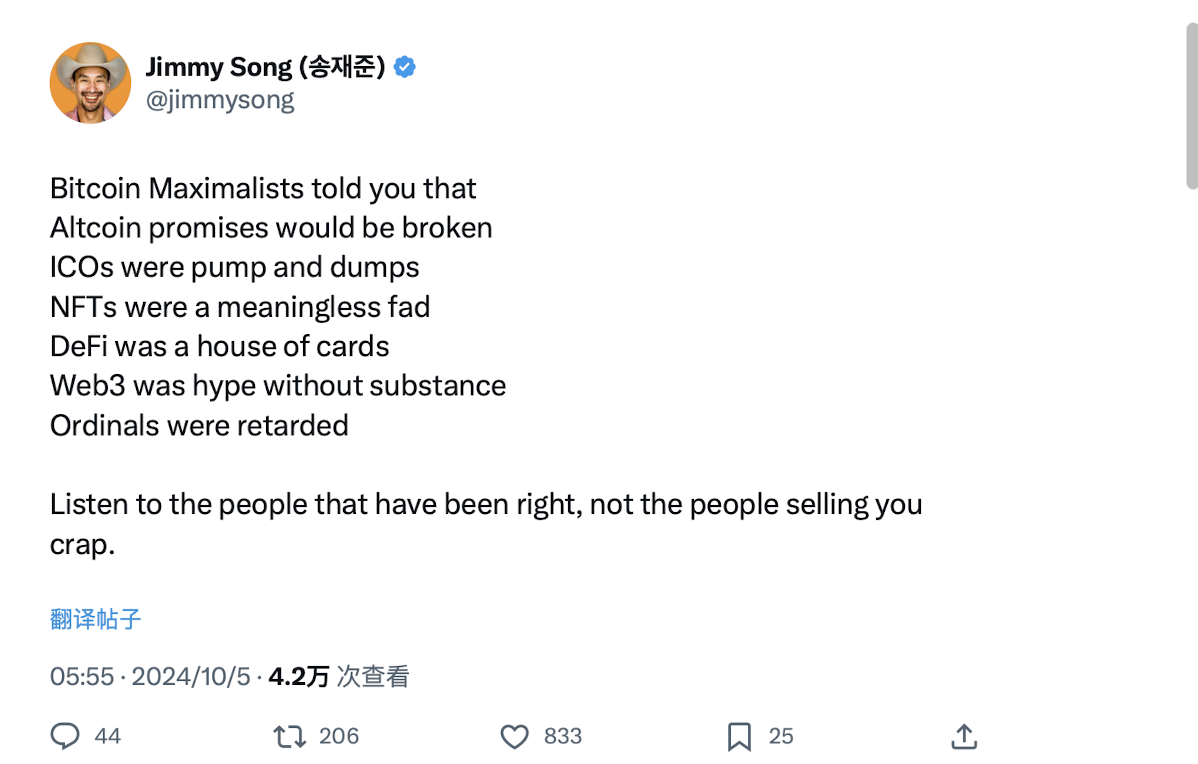
The attitude of retail investors in the market is self-evident, and their expectations for the BTC ecosystem are being diluted by the fresh narratives on ETH and SOL.Recently, giant whales have been selling BTC to exchange positions and ETH to undoubtedly pour a basin of cold water on this pile of ashes.
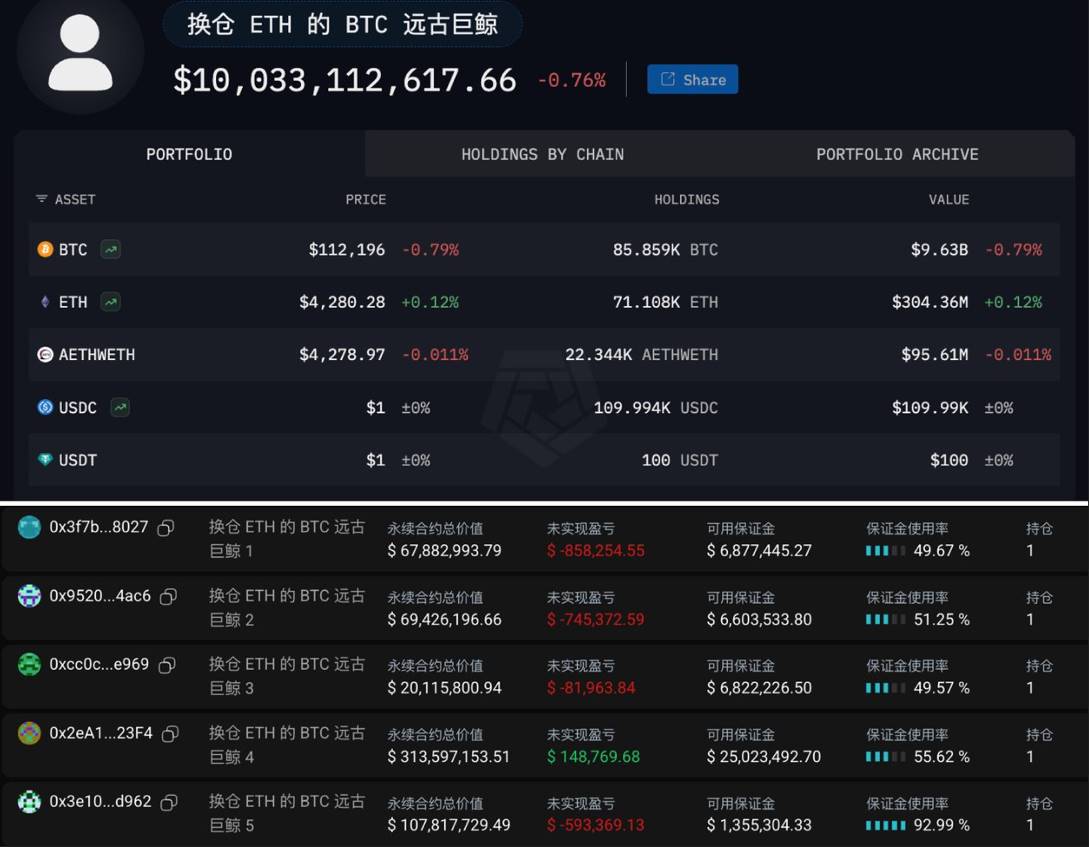
Image source @Ai Auntie
On the other hand, the tragic situation of the BTC ecosystem also reveals the inherent contradictions in the economic model of most BTCFi projects.
To attract liquidity, project parties must provide high-yield incentives, but high-yield often depends on token issuance, which in turn dilutes long-term value.
BitLayer’s ultra-high turnover rate and Merlin chain’s user churn both prove the unsustainability of this mining, that is, sell-off model.
BTC, return to the spiritual totem
Looking back at the rise and fall of BTCFi, we may need to re-examine the positioning of BTC in the crypto ecosystem.
Unlike ETH that was designed as a “world computer” from the beginning, BTC is more like an encrypted totem, and the function of the totem is to consolidate consensus and belief rather than functional expansion.
ETH can carry the DeFi ecosystem because it optimizes programmability at the architectural level.The value proposition of BTC has never lies in “what can be done”, but in “what represents”.Perhaps when we try to let BTC carry complex financial applications, it is already against its essence.
Compared with BitLayer and Merlin, Babylon is relatively successful, and its success proves that as a pure BTC staking protocol, it does not try to change BTC, but uses BTC’s security to provide services to other chains.This idea of ”specializing in skills” may be the correct way for BTC to participate in DeFi.
The decline of BTCFi is not a failure of BTC. This obvious truth can be seen from the continuous breakthrough of BTC’s high this year.BTCFi is more like the market’s rational correction of excessive financialization.
BTC is still the most important store of value in the crypto world, but it will never and should not be the next ETH.
Recognizing this may be a sign that the entire industry will mature.







